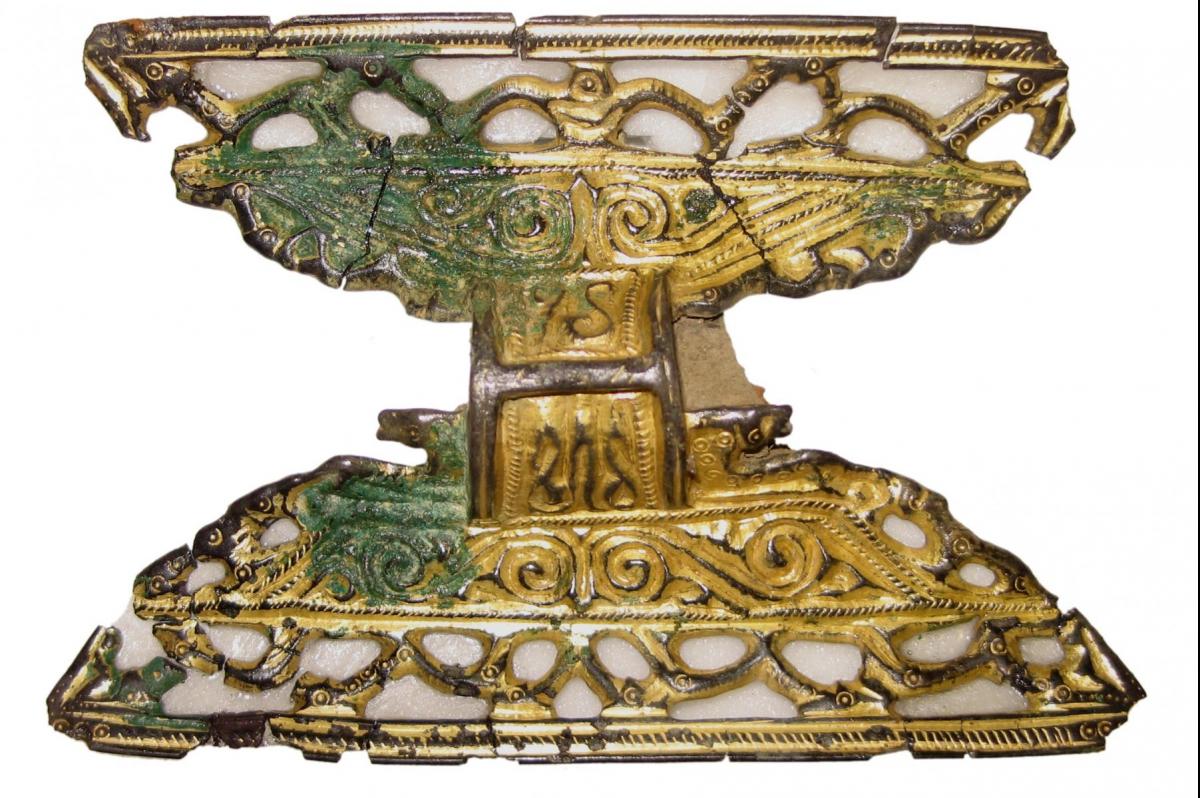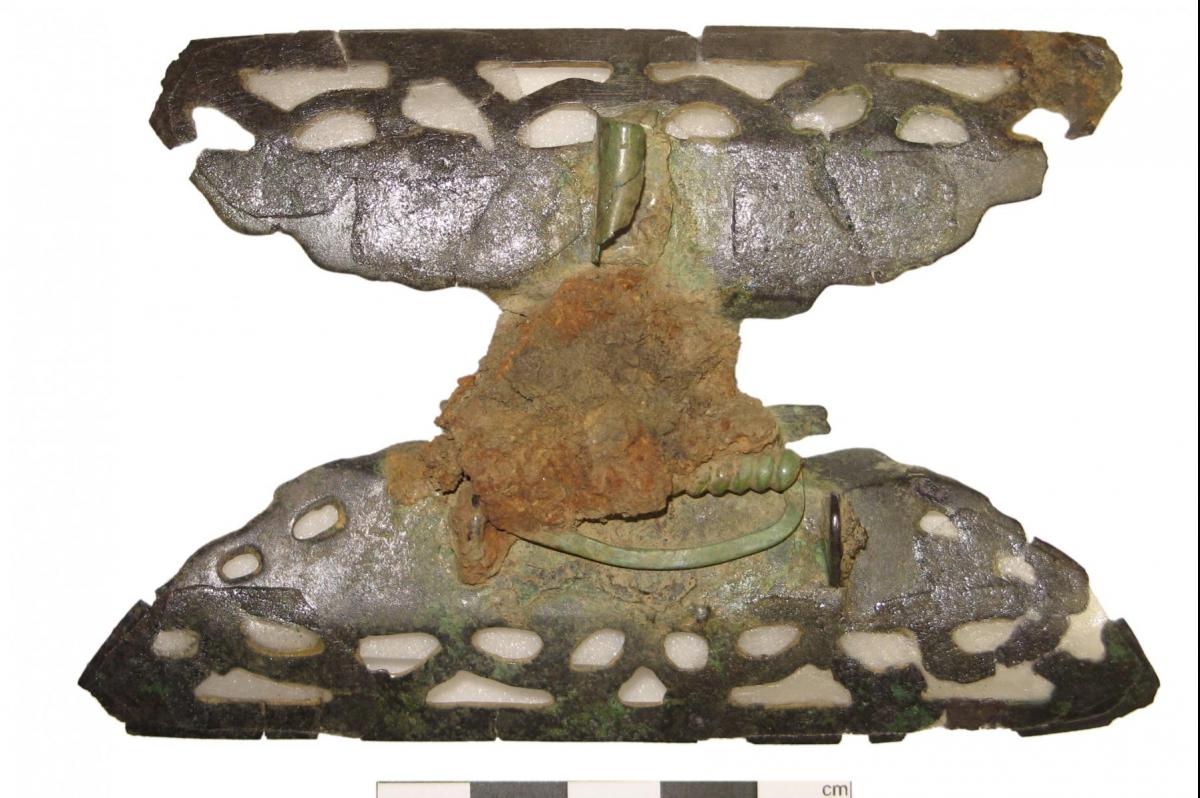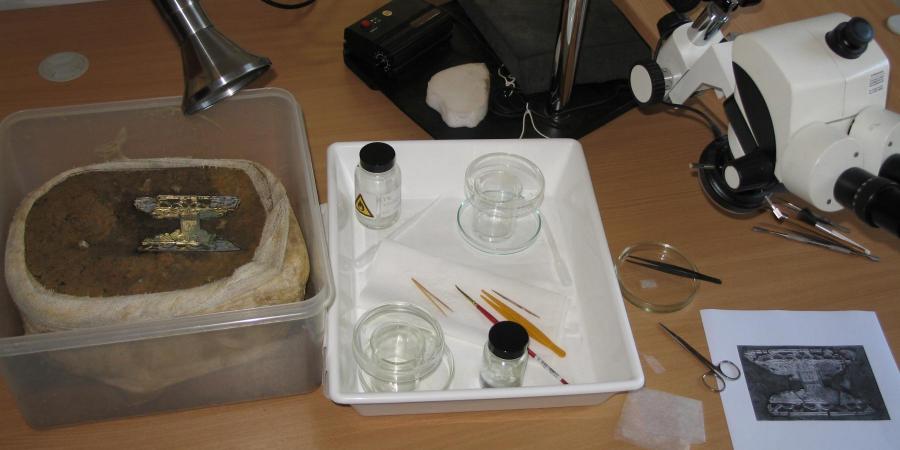Excavation and reconstruction of a brooch
Wessex Archaeology has a long-standing involvement with Channel 4’s Time Team, providing on-site support and ‘back-stage’ expertise. In 2011, during Time Team’s excavations at West Langton in Leicestershire, a metal brooch was found in an Anglo-Saxon grave. Because of the fragility of the object, it was lifted in a block of soil along with some associated glass beads, and brought back to the WA offices in Salisbury for controlled excavation and treatment by our conservator. At this stage the brooch was barely visible, but an X-ray of the soil block revealed its shape and the fact that it was very fragmented. It also showed a hole (the dark area) in the soil block underneath the brooch.
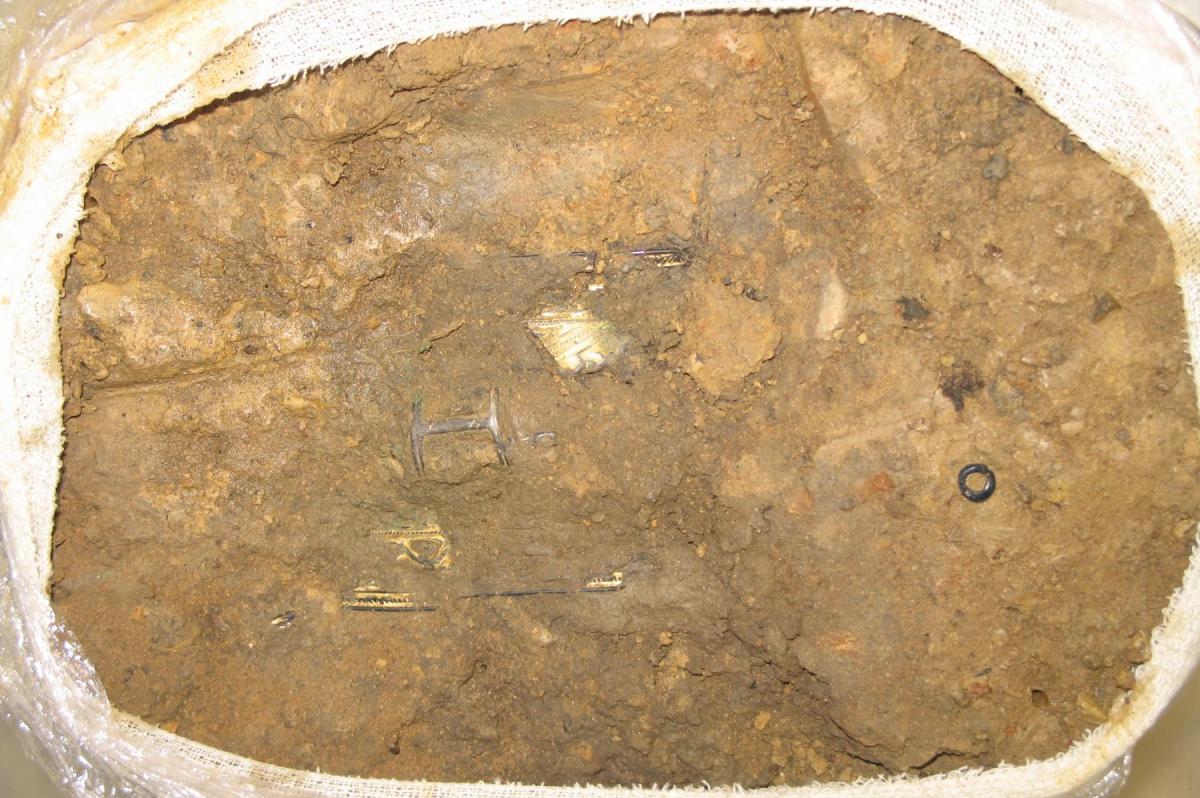

Using the information from the X-ray as a guide, the brooch was carefully excavated and found to be in 17 pieces. It is made of copper alloy and the front surface is gilded. The gold has been rubbed away from the raised areas of pattern, suggesting that it was well worn before burial.
Before the brooch could be lifted from the soil block, small patches of gossamer were attached to the front to hold the brooch together. The patches were fixed across the breaks using an adhesive that would hold in the damp soil and that could be removed later without disturbing the patches that would eventually be attached to the back.
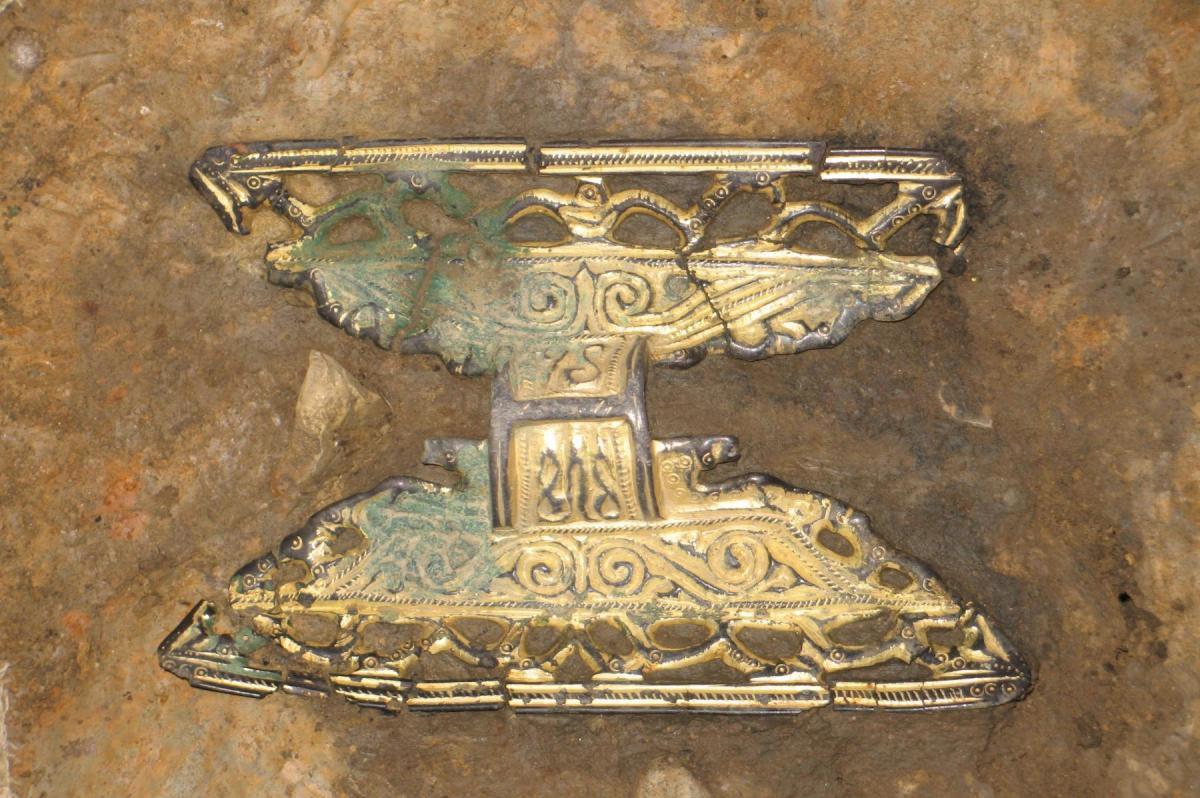
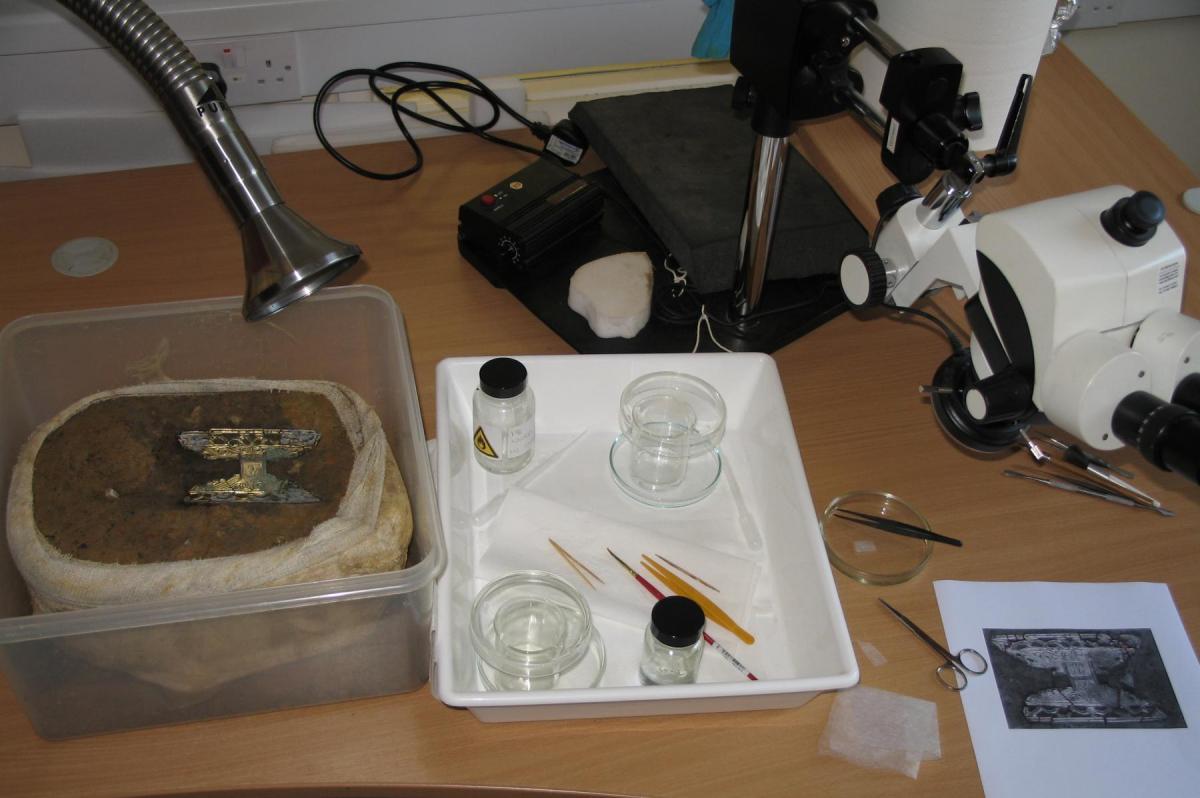
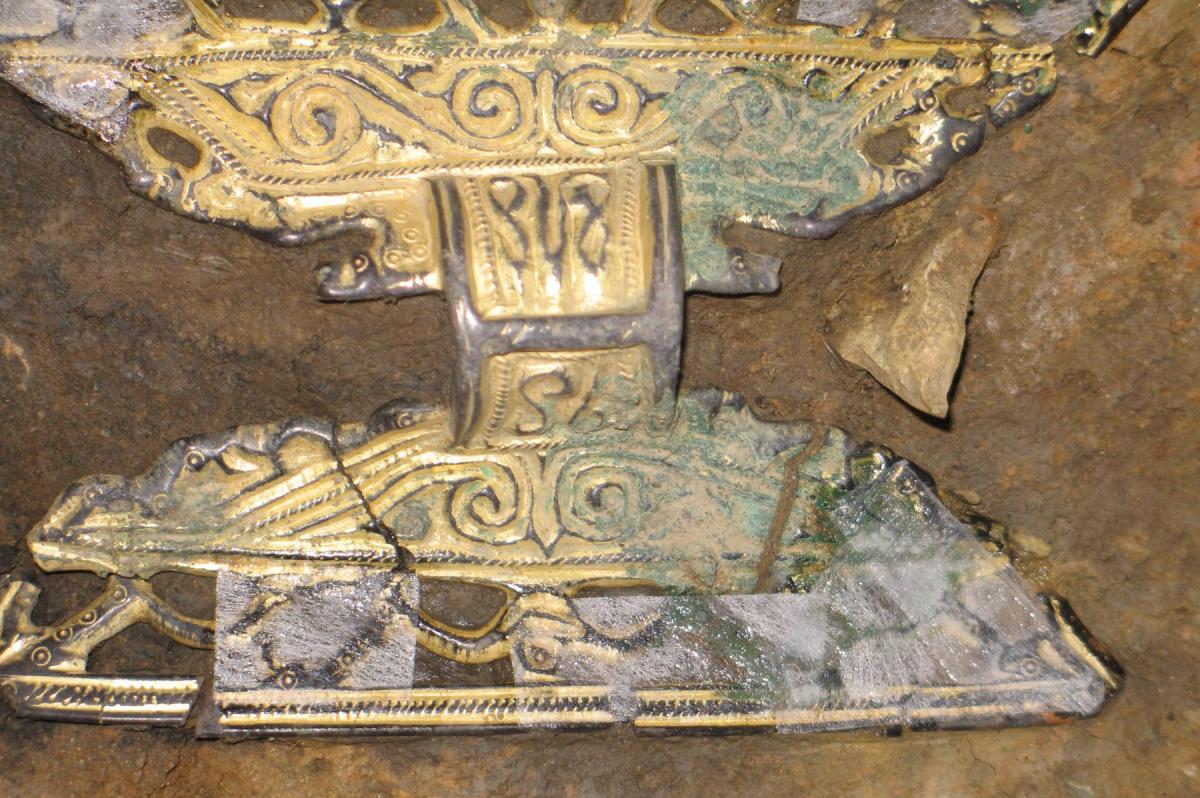
The patches on the front allowed the brooch to be lifted and turned over. On the back, mineralised textile has been preserved. After removing the soil, the fragments of brooch were loosened from their front patches, eased back into place (as near as possible) and new patches put on the back. The adhesive used on the back acts as an ‘optical filler’, so that you can see the back of the brooch through the patches. Once it was held together from the back, the patches could be removed from the front of the brooch, leaving the fully conserved object.
